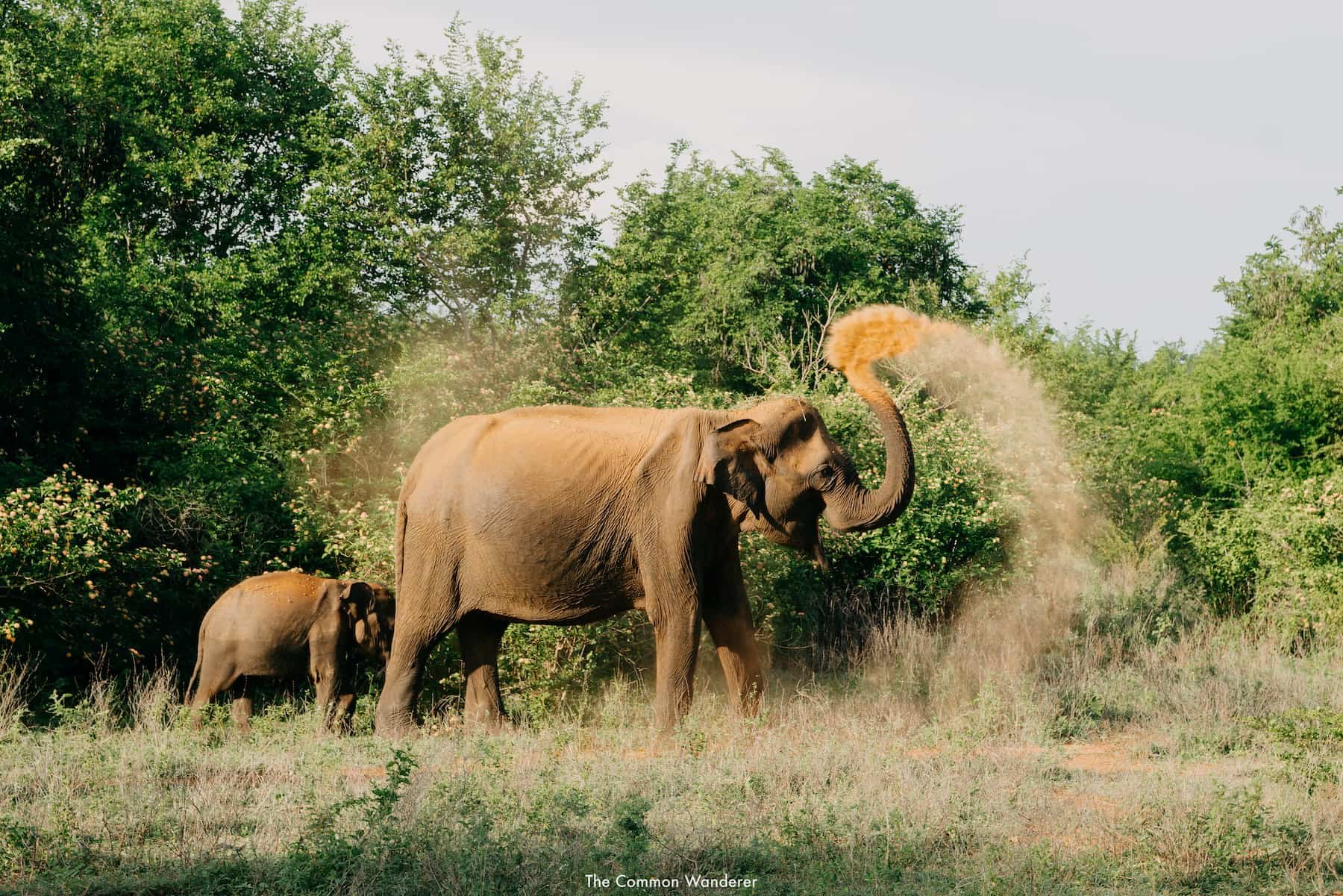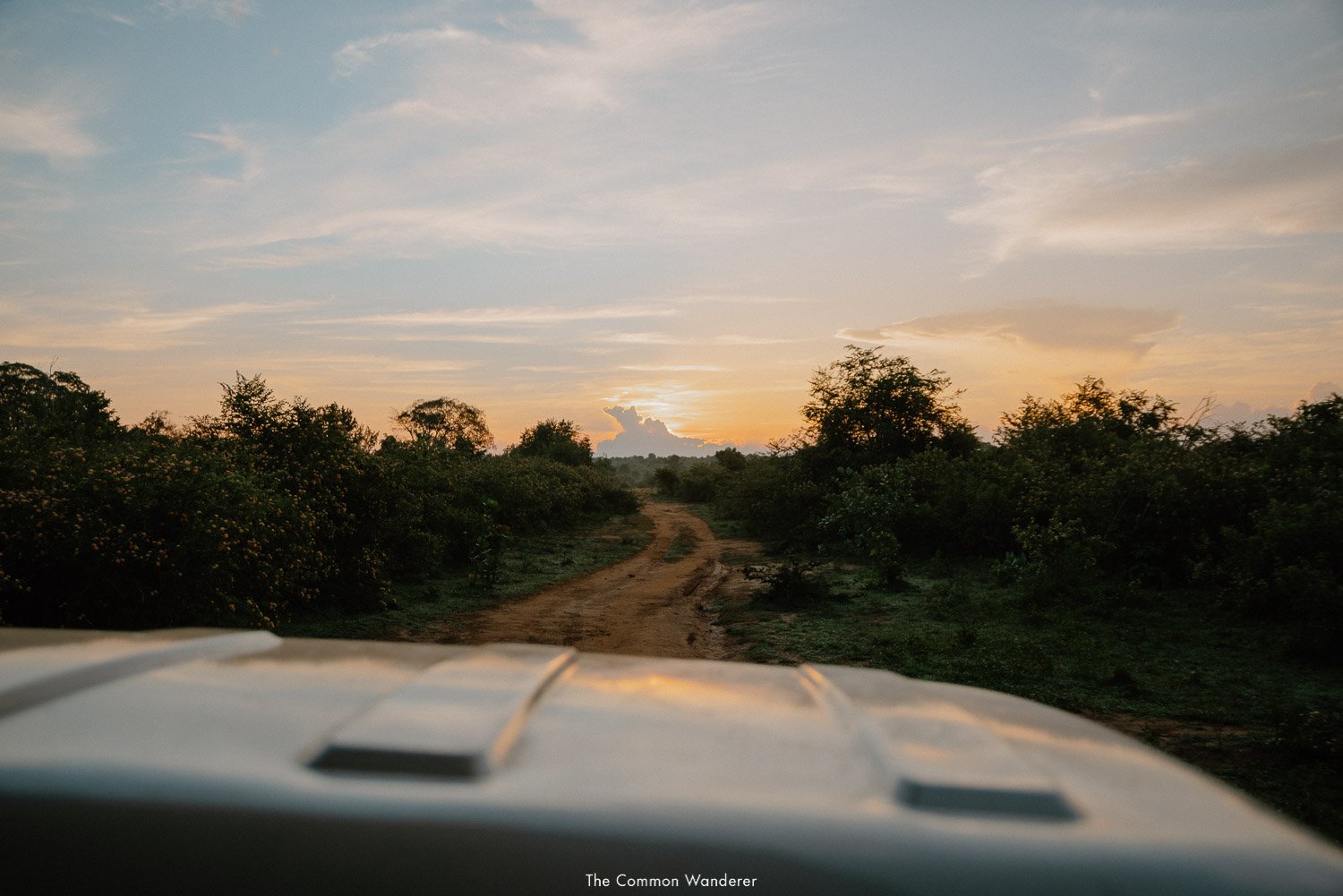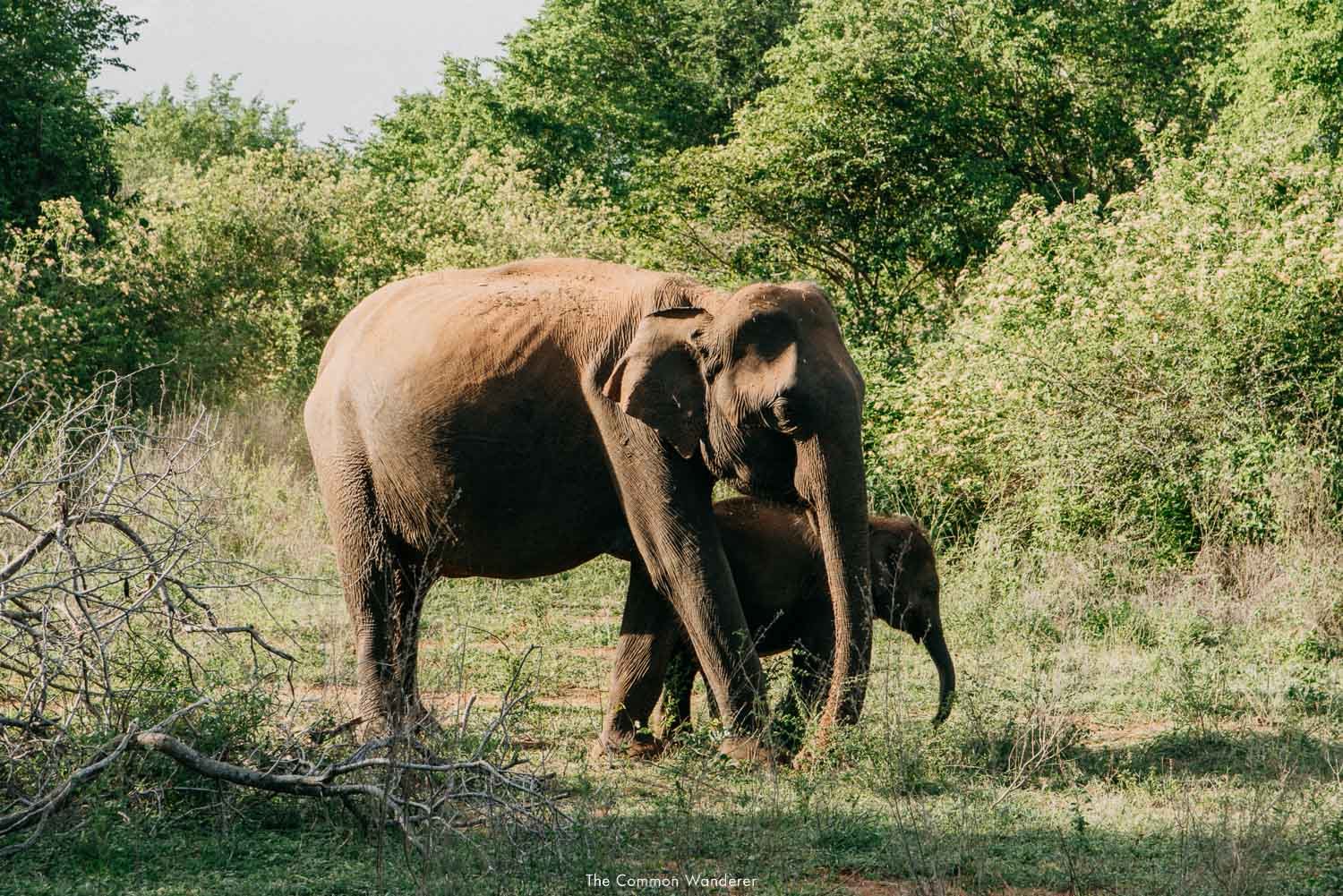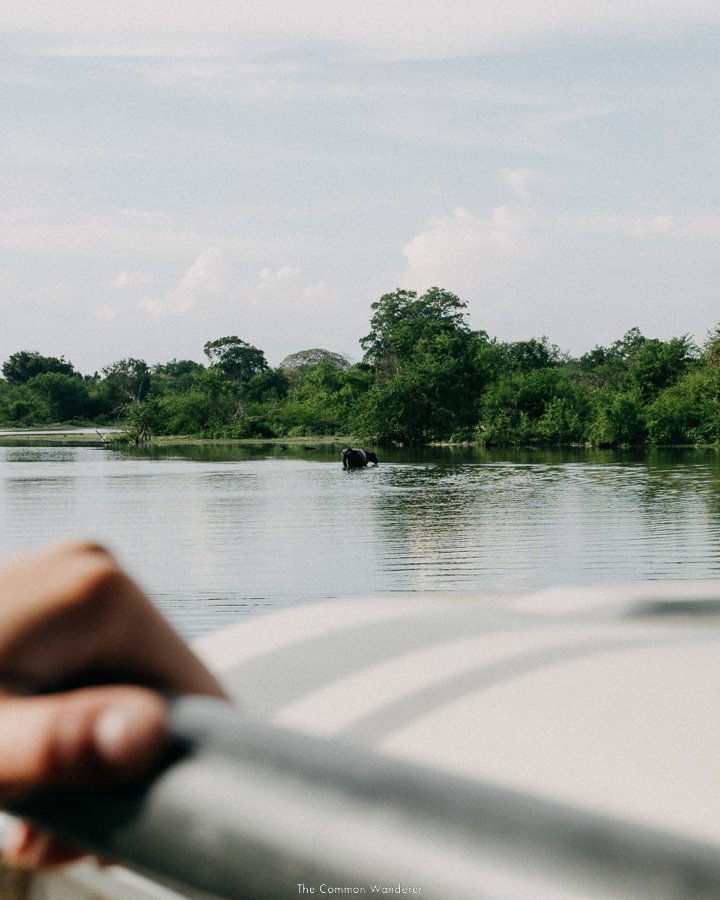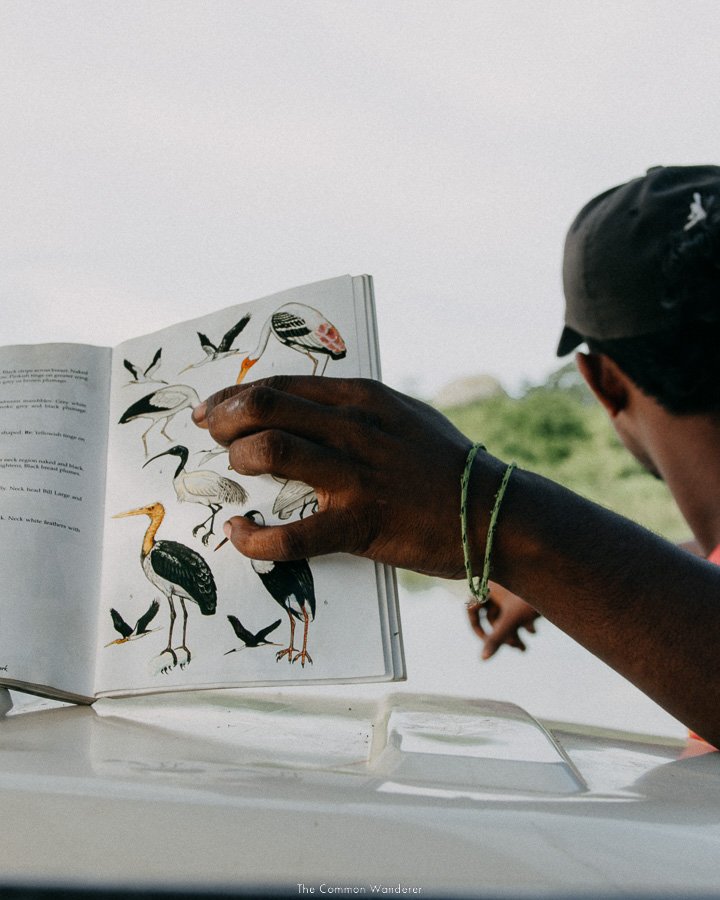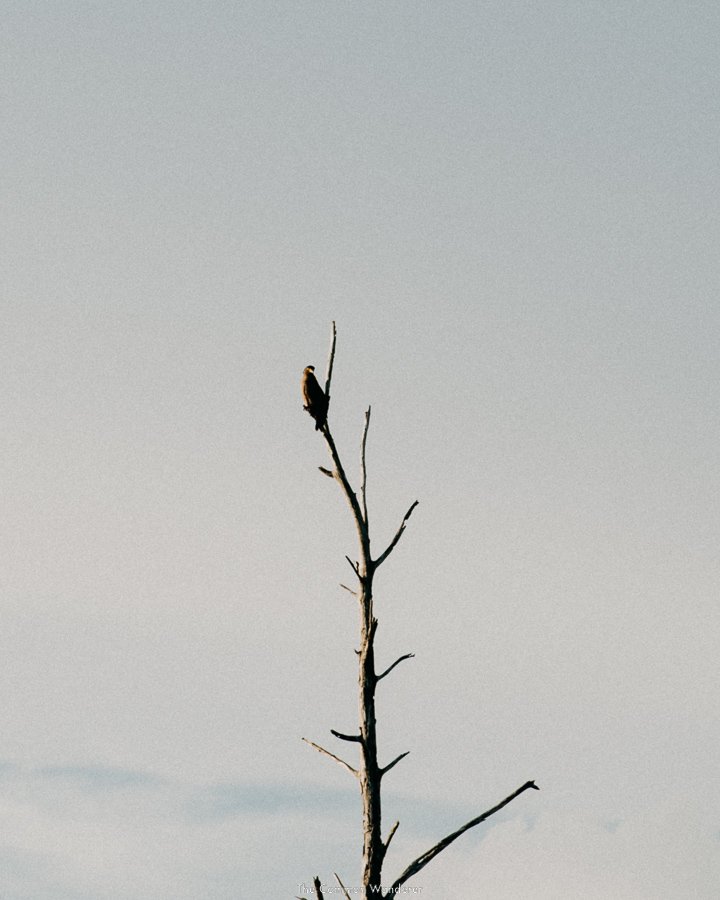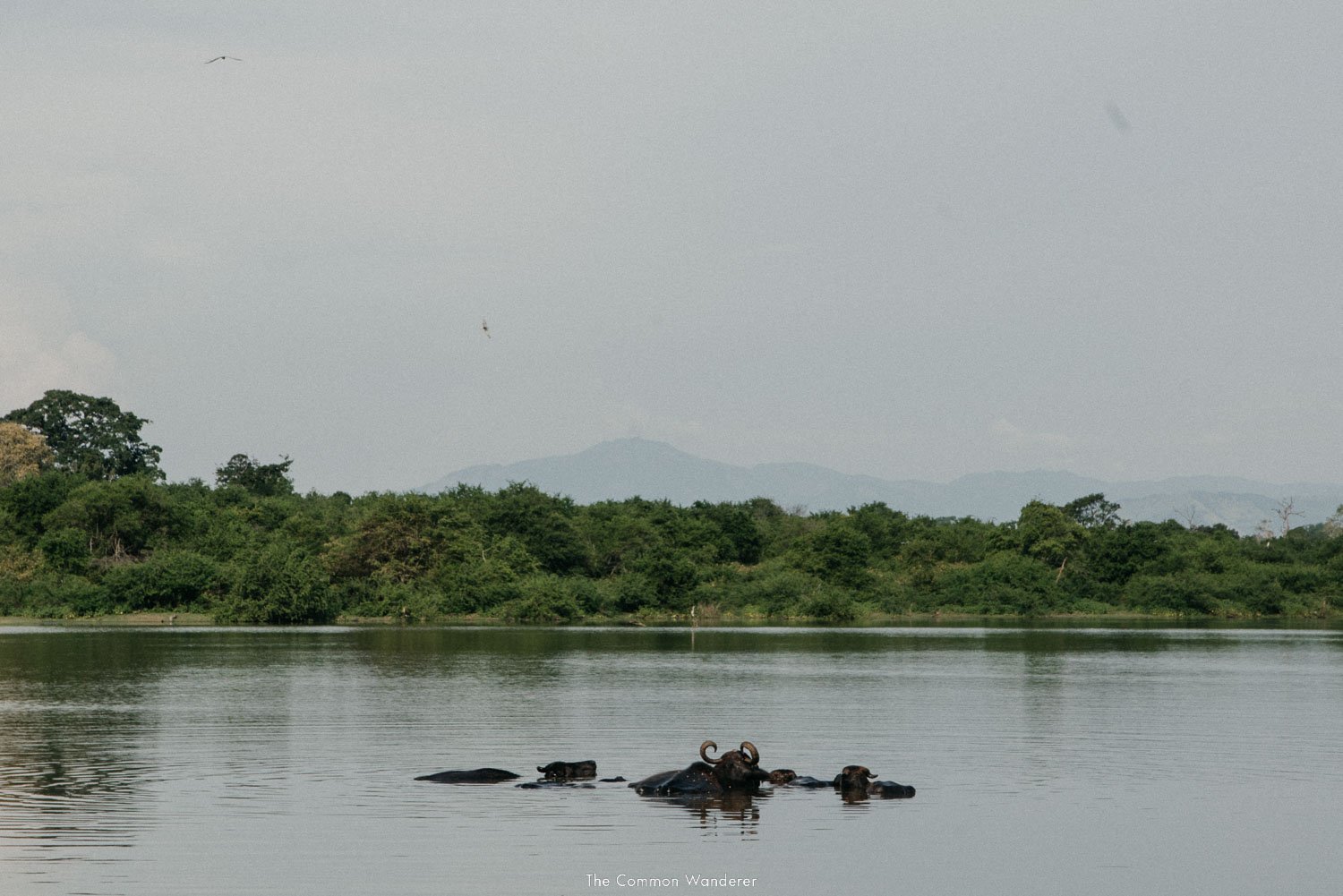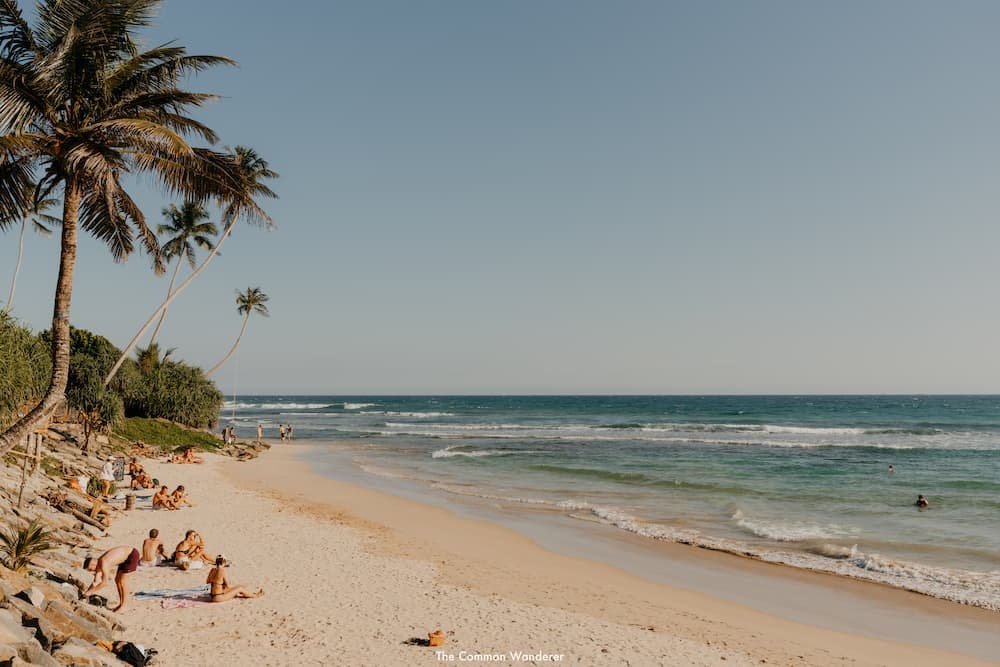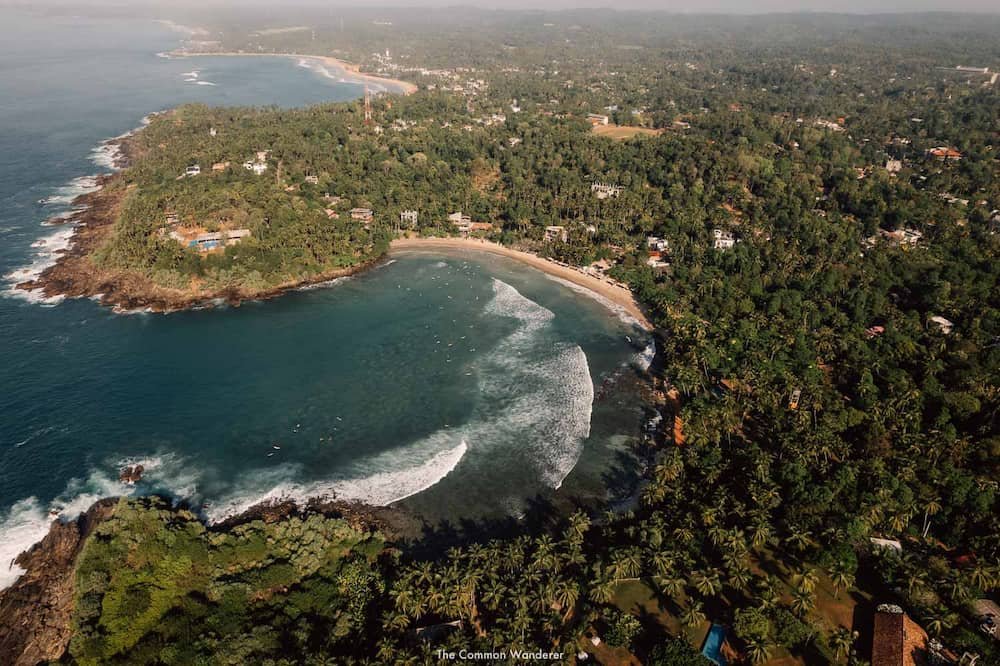A Guide to Visiting Udawalawe National Park, Sri Lanka's Home of Elephants
Discover the beauty of Udawalawe National Park with our guide on how to visit. Plan your safari adventure with our detailed overview of the park, including the park's history, wildlife, where to stay and the best time to visit. Start planning your safari adventure now!
Seeing an elephant for the first time is overwhelming.
They’re majestic creatures, especially in their natural habitat. Their habits are human-like, as is their connection to family. The ways they communicate in grunts and trumpets, protect their young, feed and fend, all bear a striking resemblance to humans.
It’s their sheer size, however, that is most striking. They’re huge - and even larger than expected in 3D.
In Udawalawe National Park, elephants are everywhere. They roam in herds of up to 30 and total up to 600 in the park, which means a visit here is almost guarantee of sightings. There are also leopards, crocodiles, water buffalo, deer, and all types of bird species, but it’s the elephant that’s the star of the show here.
Seeing them roam the plains, dust themselves, tend to their young, eat and drink, and simply be wild elephants, is a core memory from Sri Lanka we’ll never forget.
And that’s what makes a safari in Udawalawe, and indeed Sri Lanka, so damn exciting. Just a four-hour drive from the capital, Colombo, and close by the famed southern coast and central highlands, the national park is reminiscent of those far more popular in Africa or India, yet so much more accessible.
In our opinion, this is the best place to witness elephants in their natural habitat just about anywhere in the world, and for that reason, we think it’s a must-see on any Sri Lanka itinerary.
We’ve put together this guide to help you experience a safari in Udawalawe for yourself. With detailed information on how to get there, where to stay, and the costs and fees associated, this is the only guide you need to read.
Enjoy, and remember to bring your camera - you won’t regret it.
LOVE OUR PHOTOS? Edit like us with our Tropical Dreams Preset Packs, and Tropical Bliss mobile video filters, inspired by the tropical beauty and colour of this beautiful country
UDAWALAWE
NATIONAL
PARK
OVERVIEW
WHERE | Central Sri Lanka
WHAT TO SEE | Elephants, Leopards (hopefully!), crocodiles, birds, incredible natural beauty
SAFARI FEES | Around $75 USD for a full day safari
OPENING HOURS | 6 am daily
HOW TO GET THERE | Local bus, Taxi, tuk-tuk, private transfer
UDAWALAWE NATIONAL PARK HISTORY
Established in 1972, Udawalawe National Park is a great example of Sri Lanka's efforts to protect wildlife in an ethical and sustainable way.
Primarily created to provide a sanctuary for the large population of wild elephants that lived in the area, as well as to protect the diverse range of flora and fauna found in the park, Udawalawe also provides a catchment area for the Udawalawe Reservoir, which is an important source of water for the surrounding area.
Known for its amazing wildlife (read: elephants, and plenty of them!) and breathtaking landscapes, he park is nestled in the district of Uva, part of the Udawalawe reservoir, the largest water body in the dry zone of Sri Lanka, and covers an area of around 31,000 hectares.
UDAWALAWE NATIONAL PARK SAFARI | WHAT TO EXPECT
Our morning safari started early (book yours here), as all good ones do. The air was heavy and sweaty, and a dense mist sat just above the ground, providing an eerie, yet astoundingly beautiful journey towards the park’s entry gates.
The skies turned to fire as we waited in silence, with many other jeeps, for the gates to open. As the sun began to emerge above the horizon, the jeep shook into gear, and off we went, through the towering gates, into the park.
The dirt road was bumpy, the surrounding environment relatively barren - a smattering of grassland and mid-sized trees dotted the landscape. It wasn’t long before we stumbled across our first animal, a painted stork, sitting prominently on the top of a dead tree. Now, a stork isn’t exactly exotic, but the keen twitcher who formed part of our safari group was wildly excited by this initial discovery. It made us keenly await a sighting of what we’d come to see, an elephant.
Before long we’d made our way further into the park when our guide slammed on the breaks. To our right was a family of about six elephants, strolling majestically through the dense, low-hanging foliage that we’d recently entered. There, we watched in silence as this family went about their morning routines - one rubbing their back on a tree, the other spraying dirt over themselves to protect against the oppressive heat.
“There’s a baby”, Mim excitedly squealed, holding back tears that seem to overwhelm her at any major animal encounter. We watched this baby slowly emerge from beneath its mother’s torso and watched intensely as the cute baby played and explore amongst the family and surrounding trees. It was the highlight of our day, already.
After a good 10 minutes, we continued further into the park, stopping at various waterholes to observe a range of impish crocodiles sunning their bodies, mouths open as if willing a bird, deer, or would-be tourist, to touch their tongue.
Over the next 2 hours, we spotted a diverse range of the park’s birds and mammals - water buffalo, deer, colourful peacocks, eagles and, wonderfully, more elephants.
The midpoint of the tour coincided with a stop at one of the vast reservoirs - we enjoyed tea and biscuits, overlooking the water, pondering how a country so small could have such a vast array of wildlife. It was at this point our guide, Lasith, gave us a more thorough rundown of the flora and fauna within the park.
After 30 minutes, we set off again, our jeep chugging through the barren landscapes before we stumbled across the most magnificent sight, a majestic bull elephant wading in one of the small watering holes. We watched in awe, mesmerised by the sheer presence of these special animals.
And that was that a four-hour safari done, a myriad of wonderful animal sitings, and of course, an overwhelming amount of elephants witnessed.
While we were slightly disappointed not to see the famed Leopards that stroll the island’s national parks, we were comfortable in the knowledge that sitings here are rare, and that it is far more likely to see one at Yala National Park.
Overall, on most Udawalawe National Park safaris you can expect to see a wide variety of wildlife in their natural habitat. If you are a bird lover or prefer any other animal, mention this to your guide beforehand so he can take you to the best spots. Otherwise, the whole safari might be the rush between one elephant herd and the other, which again, isn’t the worst thing, as our experience shows.
During your Udawalawe safari, it’s likely you’ll get up close and personal with many elephants - they’re in abundance in the park, and are very accustomed to the jeeps, unlike in places like the Serengeti or Chobe National Park. Just remember to ask your driver to switch off the engine while observing the wildlife in front of you.
The safari jeeps themselves are an exciting and adventurous way to explore the park, especially if you’ve never been on a safari.
They have large open sides, and lots of room to move around and take photos. Regardless of where you sit, you will have a good view of the surrounding scenery and wildlife. Just don’t ever exit the vehicle unless otherwise told (for safety reasons!). The ride itself is bumpy and rough but it’s all part of the fun, and all the excitement after seeing your first elephant will make you hardly notice it after a while.
On top of that, the landscape you will pass by is stunning. From savannah-like grasslands to dense forests and wetlands, it’s typically Sri Lankan in nature.
Once inside the park, you’ll have to pay the park entrance fee at the ticket office. If you have booked a tour and paid in advance, the driver will get tickets for everyone. After entering the park, all the jeeps will thankfully spread out and take different routes to avoid overcrowding and scaring animals away.
WHAT ANIMALS WILL YOU SEE IN UDAWALAWE NATIONAL PARK
Some of the most majestic animals in the world call Udawalawe National Park home.
Expect to see elephants and many of them. Roaming freely around in large herds, elephants are Udawalawe's key attraction, making this park a perfect place to get up close and personal with these gentle giants.
Alongside numerous elephant herds, Udawalawe National Park gives you an opportunity to spot other mammals such as deers, sloth bears, leopards, monkeys, water buffaloes, crocodiles, and jackals - it feels like you're on the set of a National Geographic documentary, just without the commentary from Attenborough (unfortunately!).
The leopards that roam the park are particularly elusive animals, so keep your eyes peeled and your camera ready if you're lucky enough to spot one - as we said, we didn’t here, but thankfully managed to in Yala National Park.
If you’re a bird lover, you’ll be happy to know that Udawalawe National Park is home to over 150 species of birds, so if you’re looking forward to seeing some of Sri Lanka’s most exotic birds, be sure to bring your binoculars.
Finally, don't forget to keep an eye out for crocodiles basking on the banks of the Udawalawe Reservoir, and water monitors lazing in the sun.
HOW MANY ELEPHANTS ARE IN UDAWALAWE NATIONAL PARK
The number of elephants in Udawalawe National Park can vary depending on the time of the year and the dynamics of the herd.
According to recent estimates, the park currently has around 600 wild elephants, making it home to one of the largest and most stable elephant populations in Sri Lanka.
Although it's very likely you'll be able to spot them wandering around, please note this cannot be guaranteed as wild animals are unpredictable.
THINGS TO KNOW BEFORE VISITING UDAWALAWE NATIONAL PARK
DO YOU NEED A GUIDE TO VISIT UDAWALAWE NATIONAL PARK?
Our guide, a legendary Sri Lankan man with an eagle eye and a wealth of knowledge about the park and its inhabitants, made our experience at Udawalawe National Park exceptional, so if you are wondering whether or not you need a guide to explore the park, the answer is a resounding YES!
Guides are there to help you make the most of your visit.
These guys have spent their lives learning about the park, its animals, and conservation efforts, which means they can point out animals and plants that you might otherwise miss, but also share interesting facts about wildlife behaviours.
Also, they will know the best routes throughout the park and have the inside scoop on the best times of day to visit certain areas.
Additionally, having a guide with you is much safer. As wild animals are unpredictable, especially the elephants within the park, so it is always a good idea to have someone with you who knows how to navigate the area safely and is introduced to the park's rules and regulations.
This way, you will avoid any potential mistakes that could put you or the animals at risk.
Another perk of hiring Udawalawe National Park guide is that they are in constant communication with other safari drivers. If an animal is roaming on the other side of the park, your guide will have the information on time and can take you to the spot immediately.
Lastly, exploring Udawalawe National Park safari with a guide makes a really affordable option to experience the park in its full glory.
BOOK | Udawalawe Safari + Guide
WHEN IS THE BEST TIME TO VISIT UDAWALAWE NATIONAL PARK
As we explain in our ‘39 things to know before visiting Sri Lanka’ post, the Island experiences not just one, but two monsoon periods each year, affecting opposite sides of the island and alternate times of the year.
The dry season, which runs from December through March, really is really the only time to visit Udawalawe National Park, as the lack of water means plenty of wildlife to be seen around reservoirs.
We visited in April, and while it was a great time to see the elephants, it was overwhelmingly hot and sweaty, making the experience less than comfortable.
It’s worth noting the main southwest monsoon, ‘Yala’, brings heavy wind and intense rains to the west and southwest coastlines, including Udawalawe National Park from April/May through to August. The second monsoon hits the east coast and northern regions (Trincomalee, Arugam Bay, Nilaveli, Jaffna) between October and February.
During the monsoon season (May to October), the park is at its most lush and green, but heavy rains and flooded roads could spoil the mood, plus it may be difficult to spot animals due to the weather. It’s for this reason, we’d steer well clear of the park, and Sri Lanka in general.
Regardless of the season you choose, be sure to book a safari early in the morning or late in the afternoon as the animals are most active during this time of the day.
READ MORE | 30+ tips for visiting Sri Lanka
WHERE IS UDAWALAWE NATIONAL PARK, AND HOW TO GET TO THERE
Located between the forests and tea plantations of Ella and Nuwara Eliya in the central hill region and the sandy coastline of Sri Lanka's southern beaches, Udawalawe National Park holds the perfect position for those travelling between the two.
There are several ways to reach the park: by car, taxi or public transport. Travelling by bus is a common and cost-effective option, especially if you're travelling on a budget, plus it is a cool opportunity to mingle with locals - although we decided to catch a tuk-tuk from Ella to save time.
FROM THE SOUTHERN COAST (MIRISSA, HIRIKETIYA) TO UDAWALAWA
Bus journey | Mirissa – Matara – Udawalawa
Cost |Around 1,10 euros
Travel time | Around 3.5 hours
FROM ELLA TO UDAWALAWA
Bus journey | Ella – Udawalawa
Cost | 1,30 euros
Travel time | Around 5.30 hours
FROM COLOMBO TO UDAWALAWA
Bus journey | Colombo - Udawalawa
Cost | 0,80 euros
Travel time | Between 5 and 6 hours
UDAWALAWE NATIONAL PARK SAFARI COST
As with most things in Sri Lanka, visiting Udawalawe National Park can be done without breaking the bank, especially when compared to African safaris.
Before visiting, you do need to know that there are generally two fees that need to be paid when taking a safari.
PARK ENTRY FEES
First, there are the park entry fees. These vary depending on whether you're a local or a foreign visitor, but they generally range from around $25 USD per adult during peak season, or $20 USD in the off-season, or equivalent in Sri Lankan rupees (this gives you access to the park for the day).
SAFARI FEES
Next, there are the Udawalawe National Park safari fees. These are the fees you pay to rent a jeep with a driver. You can book online in advance or show up at the park and negotiate the price there.
The cost can vary depending on the length of the safari and the company you choose, but you can expect to pay around $25 - $35 per person for a half-day, or $45 - $65 for a full-day safari.
Now, here's a little tip that could save you some money. Always try to haggle for a more affordable rate. Even if they say it’s a fixed price, it doesn’t hurt to try.
Tipping the guide is optional but we always encourage doing so if you have had an excellent experience.
To ensure a seamless experience, and to avoid haggling, we suggest booking your safari prior to arrival - this highly rated tour is our recommendation, which includes hotel pick up/drop off, and an experienced guide to show you the best of the park.
If you arranged with your accommodation or safari operator to include both fees in one, that’s great. If not, remember to take cash with you to enter the park.
BOOK | Udawalawe Safari + Guide
UDAWALAWE NATIONAL PARK OPENING TIMES
Udawalawe National Park is open year-round, with opening hours from 6 am to 6 pm.
HOW LONG SHOULD YOU SPEND IN UDAWALAWE NATIONAL PARK?
How long you spend at Udawalawe National Park really depends on how long your Sri Lankan itinerary is.
Udawalawe National Park safari can be done in just one day, which is actually what we did, but to truly immerse yourself in this wonderful experience, we recommend staying for two days.
You will have more chances of seeing the park's incredible wildlife in different habitats and at different times of the day.
The morning Udawalawe safari and the one in the afternoon are completely different but we are sure both will blow your mind! In case you have only one day at your disposal, you can always hop on an early morning safari and set off to your next destination afterwards.
IS UDAWALAWE NATIONAL PARK WORTH VISITING?
Udawalawe National Park is worth every second of your time, trust us.
The abundance of elephants at every corner makes these majestic creatures the stars of the park and a sight to behold, whether you're watching a herd of adults grazing on the savannah or seeing a baby elephant playing in the mud.
Udawalawe National Park is also close to many other major Sri Lanka attractions, so you don’t have to travel too far to experience the wild nature of the park. It is easily accessible by road from nearby towns but still far enough to avoid the hustle and bustle of the city. Plus, this place feels more remote and untamed than other national parks in Sri Lanka. It has a vibe of an African safari, but with the added bonus of being closer to home.
Oh, and it’s super affordable when compared to other safari hotspots around the globe.
One thing to note though - it gets busy - like super busy, especially in the peak holiday periods, including Sinhalese New Year. With this in mind, if you’re after a more relaxed wildlife experience, there are better national parks in Sri Lanka to visit.
But overall, it’s 100% worth visiting.
THINGS TO KNOW BEFORE VISITING UDAWALAWE NATIONAL PARK
Before starting your Udawalawe National Park safari adventure, there are a number of important things to know, to have the most enjoyable, safe experience possible.
First of all, you'll need to get up really early! The park is open from 6:00 and as we mentioned before, the best time to see the animals is early in the morning when they are most active.
So, set your alarm, grab a cup of coffee and prepare to see an incredible wildlife show.
Even though the days can be hot and humid, the early morning safaris can be quite cold. So, make sure to pack a warm jacket or a sweater to keep you comfortable.
We also suggest taking sunscreen and insect repellent as the sun can be quite intense and the bugs can be quite pesky, so you'll want to protect yourself.
Don't forget to bring some snacks and water to stay hydrated and energized. Most of the Udawalawe safari tours will provide tea and snacks on board but it's always a good idea to have a backup, especially if you get hangry like Mim.
Be aware that Udawalawe National Park can be very busy, especially during peak season. Besides that, the drivers can be a little pushy and competitive, so patience is the key here.
Last but not least, don't leave home without a telephoto zoom lens. The park offers an abundance of wildlife, making it a photographer's paradise and a telephoto zoom lens will allow you to get close-up shots of the animals without disturbing them.
And of course, bring your sense of adventure and curiosity! Udawalawe National Park is a truly unique and magical place, and with a little preparation and the right gear, you will have an unforgettable safari experience.
SRI LANKA PACKING ESSENTIALS
Travelling through Sri Lanka comes with a unique set of needs.
To help you have a comfortable, happy journey, we recommend bringing the following items with you:
REUSABLE WATER BOTTLE | THE BEST INVESTMENT WE’VE EVER MADE! We use the Grayl water purification bottles, which allow us to fill up from any water source, anywhere in the world (including train taps!)
A TOTE BAG | The humble tote is a versatile little lifesaver when on the road. They're plastic-free, small, easily foldable, and can pack a surprising amount! Check out this range of beautifully designed, personalisable totes bags here
BIODEGRADABLE WET WIPES | Keep clean without destroying the planet!
HAND SANITISER | This is not something we’d actually recommend normally, but we now live in Covid times... so this can be a bloody great investment
INTERNATIONAL TRAVEL ADAPTER | You’ll need a European plug to keep your gear going!
POWER BANK | Don’t get caught out without power for your devices
EYE MASK | For those annoyingly early European sunrises!
BIO-FRIENDLY TOILETRIES | Avoid damaging and chemical-heavy products and facial scrubs with microbeads altogether. We recommend Lush solid shampoo, conditioner and bodywash bars, ocean-friendly sunscreen (Stream2Sea), a mooncup is a great investment for “that” week and Lip balm for the sun
TRAVEL INSURANCE | STAY SAFE IN SRI LANKA
If you can't afford travel insurance, you really can't afford to travel. As the current global situation has taught many people, things can go wrong anywhere in the world - and insurance is often the only way of mitigating any issues with minimal expense or stress for you.
For all travellers | HeyMondo - COVID-19 coverage, comprehensive travel + medical insurance, an app with 24-hour medical support, and no out-of-pocket fees. *Get 5% off your policy by booking through our link here.
For digital nomads | SafetyWing - COVID-19 coverage, comprehensive travel & medical, and policies can be purchased while already abroad.
Car Insurance | Insurance4CarHire - a great annual car insurance policy
EXPERIENCE THE BEST OF SRI LANKA
SRI LANKA TRAVEL TIPS | 31 incredible things to do in Sri Lanka, Our essential 3-week Sri Lanka Itinerary, Our 7-day Sri Lanka Itinerary, Everything you need to know before you visit Sri Lanka (39 essential tips!), Where to stay in Galle
SRI LANKA CITY GUIDES | We’ve got in-depth guides to Colombo, Galle, Kandy, Jaffna, Hiriketiya, Mirissa Beach
CULTURAL ATTRACTIONS | Our essential guides to both Sigiriya and Pidurangala, A guide to Polonnaruwa, How to visit Yala National Park, and Udawalawe National Park
TRANSPORT GUIDES | Our definitive guide to the Kandy to Ella train, how to get from Colombo to Kandy, how to get from Colombo to Galle
ELLA, SRI LANKA | Our complete guide to Ella, a guide to the Nine Arch Bridge, How to see Diyaluma Falls, Ella accommodation options for every budget (+ our recommendations)
PHOTOGRAPHY | Love our photography? Read our detailed photography gear guide, as well as our top travel photography tips!
RESPONSIBLE TRAVEL | Responsible travel is important. REALLY IMPORTANT. Learn our top responsible travel tips to help you, your family and your friends travel more consciously around the globe
ECO-FRIENDLY PACKING ESSENTIALS | Don’t leave home without our favourite eco-friendly travel essentials
DISCOVER THE BEAUTY OF SRI LANKA WITH OUR GUIDES
Some of the links on this Udawalawe National Park Guide are affiliate links.
If you choose to purchase using these links, we receive a small commission at no extra cost to you. Please know that by using these affiliate links, you're directly supporting The Common Wanderer to stay wandering, the running costs of the site, and our ability to provide you with free content to help you on your travels.
That, and you're officially a legend.

